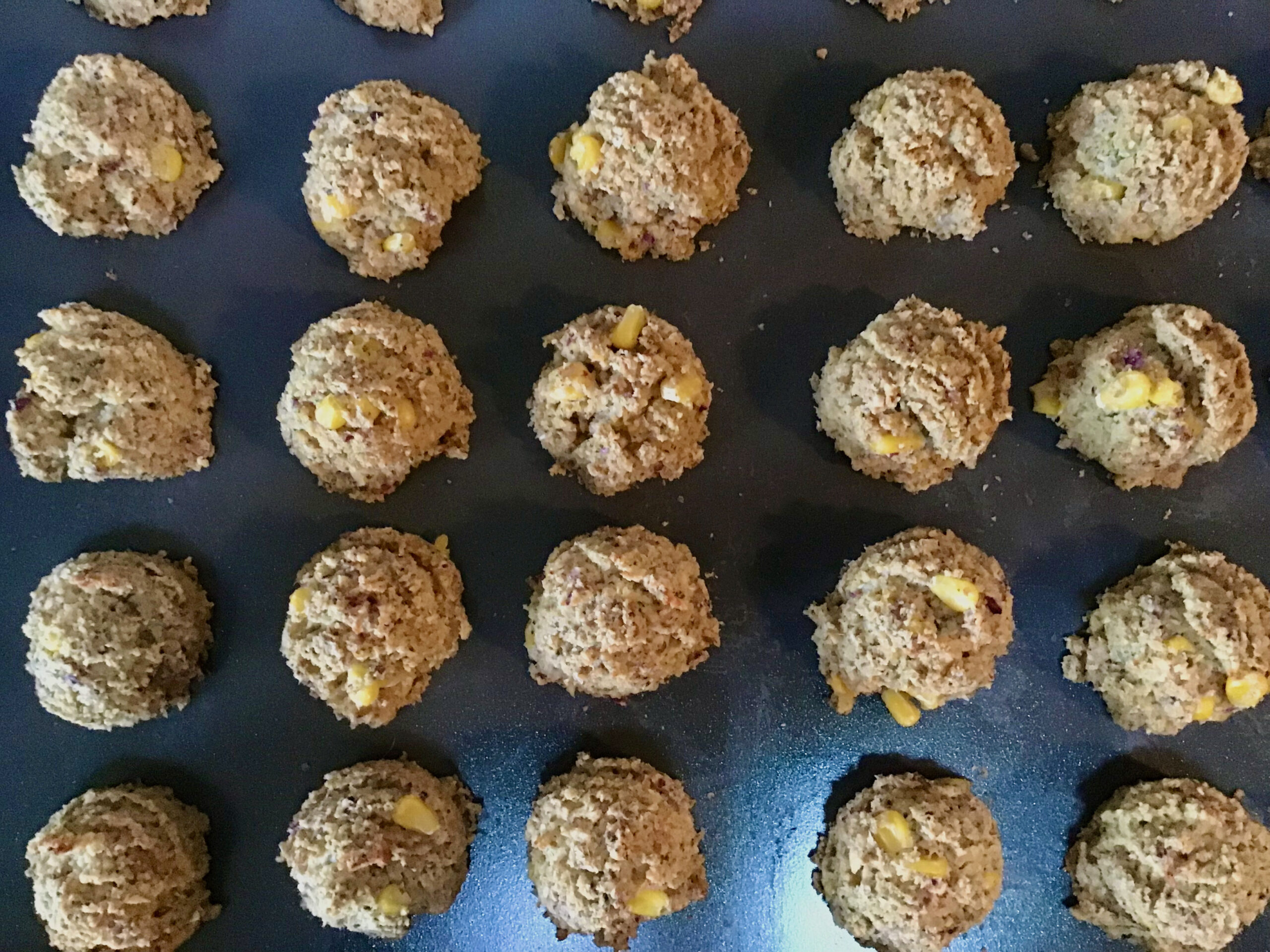Living on a vegetarian/vegan diet, beans are one of the major sources of the plant-based protein. One of our favorite beans are chickpeas, with their rich and aromatic flavor. I have several chickpea dishes that I love to make, and this baked falafel is definitely one of those we enjoy so much that I have to remember to make a large amount. It can be used in various dishes, and it can be frozen which can sometimes become a great savior for making a nutritional meal on a busy day. While authentic falafel is deep fried, this one is baked in the oven with a minimum amount of oil. What more can we wish for when the food is so delicious and healthy!
The importance of soaking and sprouting
Although many people in the United States seem to have a habit of using canned cooked beans for their cooking, I have always cooked beans by myself. This is how I learned to make dishes with dried beans in my culture. But more than that, there is no way to know how the beans have been cooked which are in the can. Have they been soaked for many hours? With what kind of quality of water have they cooked the beans with?
Beans are a beautiful and delicious food, but sometimes they can be tricky! Some people have difficulty digesting them. And even for people who can usually digest beans and legumes, they could still react differently on occasion, challenging the strength of our digestive system. This is because beans contain an inherent substance that counteracts with our digestive movement. In Eastern medicine, our gut is considered not only for processing the food we eat, but also for creating blood, as well as governing our overall energy flow and vitality. Therefore want to be kind and supportive for our gut. For that, soaking the beans for many hours and discarding the soaking water are an essential step, as it eliminates the substances in the beans which are responsible for the production of gas in our intestines. And if you sprout them, it is even better, since through sprouting, nutritional factors as well as digestive enzymes increase.
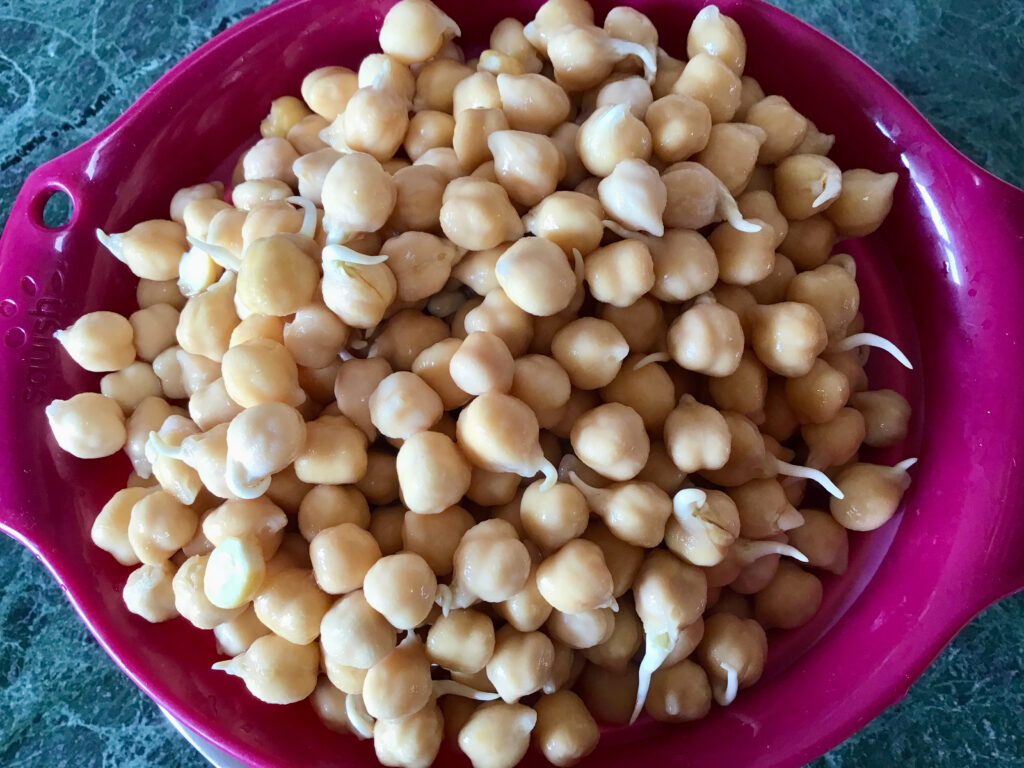
Baking instead of deep frying
I agree that there is nothing like deep fried food. Whenever I go back to Japan, one of the foods that I have such longing for eating is tempura. I only eat it in Japan, because I have never eaten the quality I can get there—never too oily, and so fine in texture, flavor, and aroma. It is so delicious!
Although I am passionate for making all different kinds of delicious food in my own kitchen, deep fried dishes are the only ones I turn to others for, because I don’t know what to do with the amount of oil I would use after frying. I also would only want to enjoy it very occasionally, not only because of its high fat content, but also because it is highly oxidized, which is not friendly for our body.
When I heard about baked falafel for the first time, I got very excited. Brilliant idea! In fact, I could picture it so well how that could work—how the baking process can create a crispy surface without frying. No more oily and oxidized, but healthy, nutritional, and delicious falafel!!
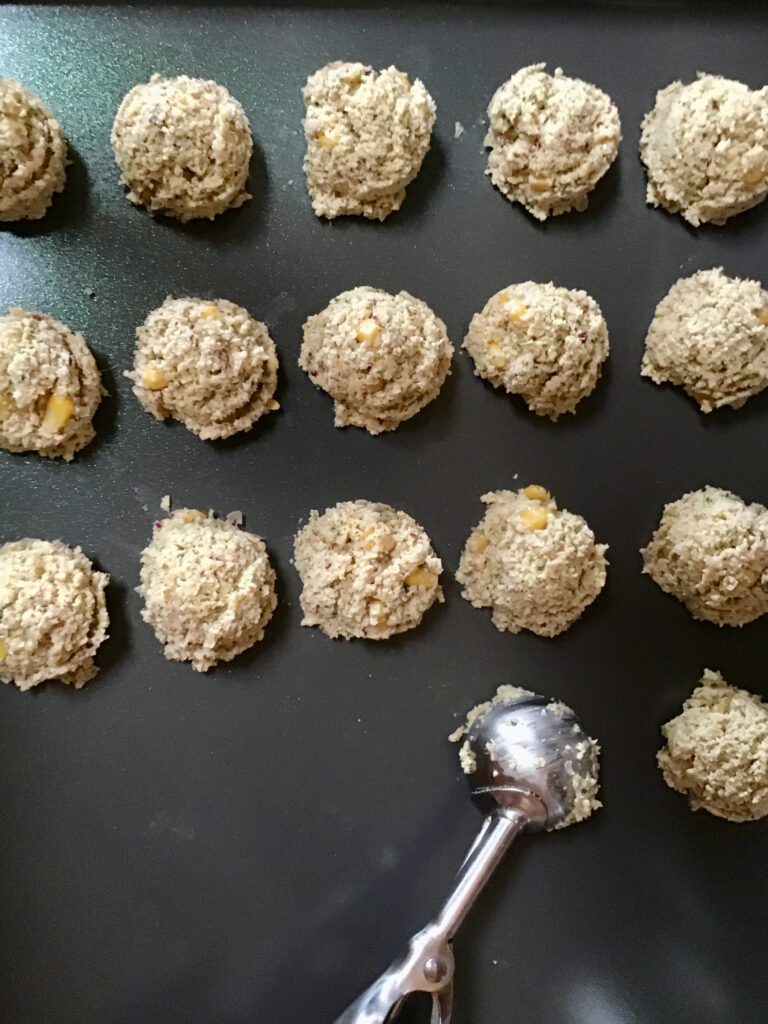
Magical flax meal
To create some fluffy texture, you don’t have to use baking soda like most of the falafel recipes are using. As I prefer to use as much purely natural ingredients as possible, I thought of using the flax meal, and it worked perfectly. Like how flax meal is being used for vegan baking, it can bind the ingredients together, and it can bring a little airiness into the batter. The best is to grind the flax seeds and make your own flax meal with your blender, or if you have a small coffee grinder designated for only grinding foods and spices, but no coffee. If not, nowadays you can get flax meal easily at the grocery store, and you can use it in different ways. I often use it in my recipes for sweets, but also, due to its high omega-3 fatty acid content, you can put it in the smoothie or sprinkle on your salad or morning porridge/cereal. It is very healthy!
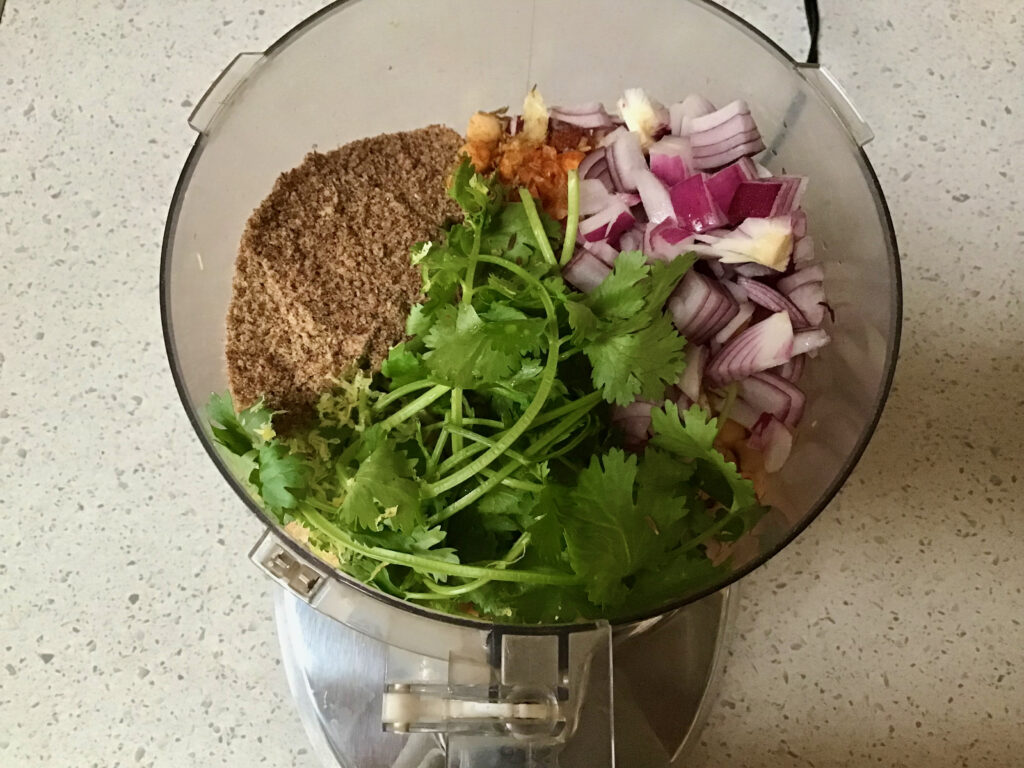
Spices and Herbs
I researched several traditional falafel recipes and found that here are the herbs and spices that are commonly used.
- Herbs: fresh cilantro and parsley.
- Spices: cumin, coriander, cayenne, clove, and black pepper.
I found different combinations, but cumin and coriander seem to be very consistent in their appearance. This time, I decided to make the falafel with cumin, coriander, cayenne, and black pepper, and since I had only fresh cilantro in my kitchen, that’s what I used for my recipe, but you are welcome to add fresh parsley as well.
Corn for playful and colorful addition
In my falafel recipe, I added some corn to the batter. I thought it would be lovely for its yellow color which brightens things up, its sweet flavor, as well as its different texture. Sure enough, it fit perfectly. It added a new dimension to the overall consistency and flavor of the falafel balls. I recommend you try it too!
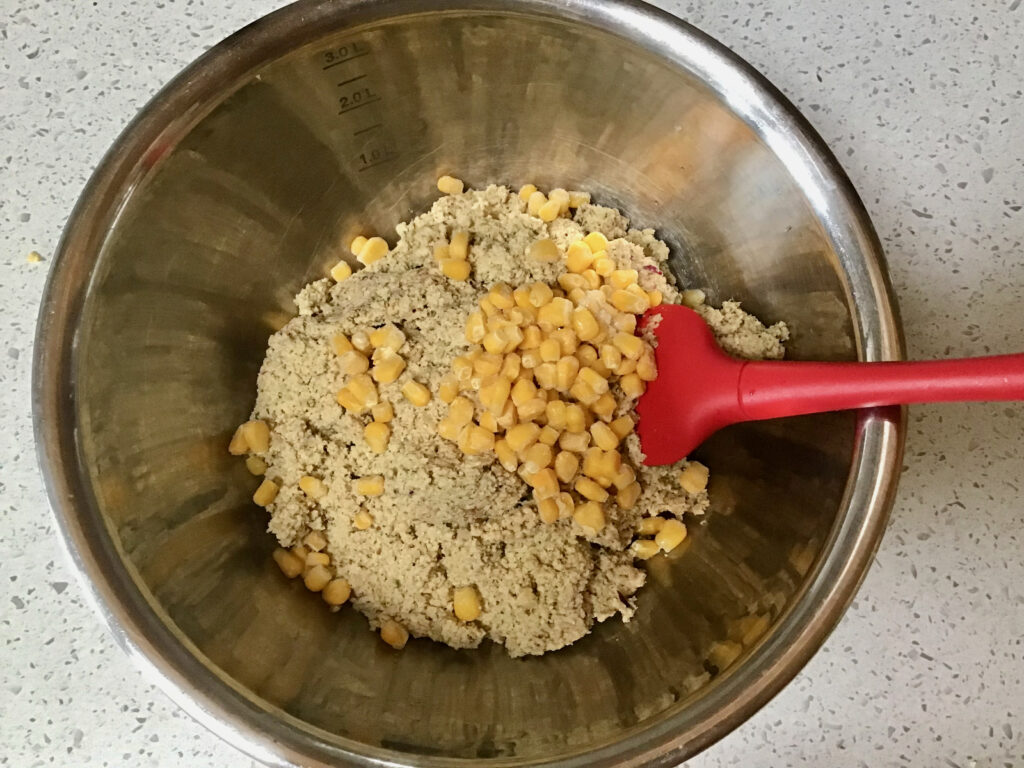
Many beautiful ways to enjoy
This time, I made enough batch that I can use the falafels for two meals. For one meal, I made a Mediterranean inspired feast as you can read in this article. And next day, I made this colorful big salad for dinner. Beautiful a joyful! With homemade coconut yoghurt and fermented hot sauce on top, it was wonderfully delicious. And there are many more creative ways to enjoy this delicious, joyous, nutrient falafel!
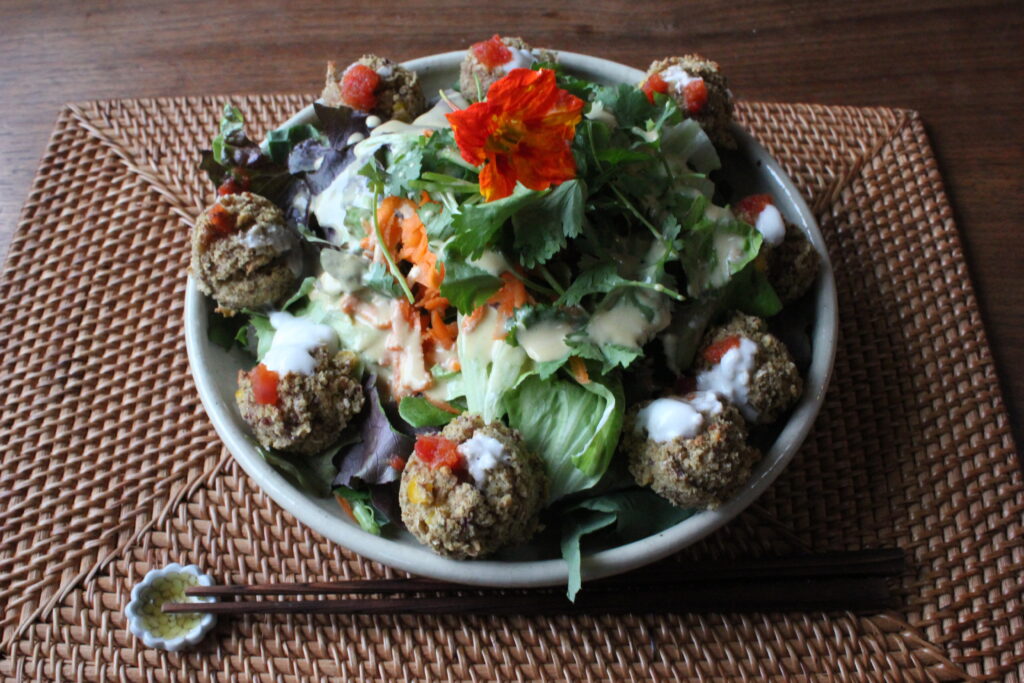
Baked Falafel with Sprouted Chickpeas

Ingredients
- Ingredients for the food processor:
- 1 cup dry chickpeas soaked and sprouted
- 1/2 medium size red onion
- 2 garlic cloves
- 1/3 cup fresh cilantro
- 2 tbsp flax meal
- 1 1/2 tbsp lemon juice
- lemon zest
- cumin
- coriander
- cayenne
- salt
- black pepper
- 1 1/2 tbsp olive oil
- —————
- 100g corn
Directions
- Step 1 Rinse chickpeas 2-3 times and soak in 3 cups of water.
- Step 2 After about 12 hours, drain the water and rinse the beans. Then soak in fresh water for another 12 hours.
- Step 3 Drain the water and rinse the beans. Drain the beans in the colander, put the lid on, and leave on the counter for 24 to 48 hours to let sprout, rinsing the beans twice a day.
- Step 4 Cut the red onion in dices and have the garlic peeled.
- Step 5 Preheat the oven to 450 F.
- Step 6 In a food processor, put in all the ingredients which are for the food processor—sprouted chickpeas, red onion, pressed garlic cloves (if you don’t have a garlic press, just cut them into small pieces), fresh cilantro, flax meal, lemon juice, lemon zest, salt, all the spices, and olive oil.
- Step 7 Turn on the food processor and blend them all well until it becomes a relatively smooth dough.
- Step 8 Put the dough into a bowl, add corn, and mix together.
- Step 9 Scoop out the dough with the ice cream scoop and place on the baking pan.
- Step 10 Put the falafel balls into the oven and bake for 25 minutes.
